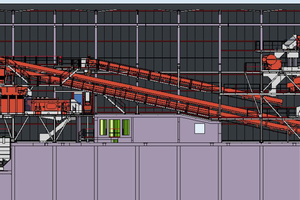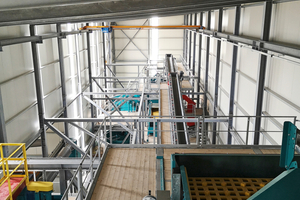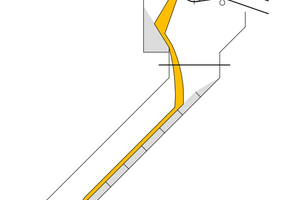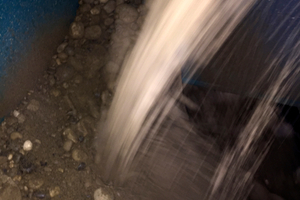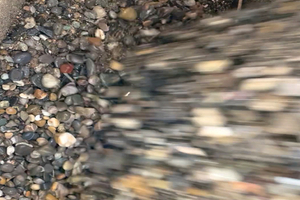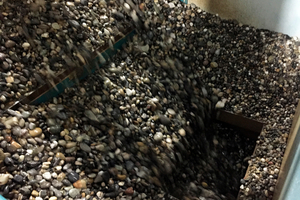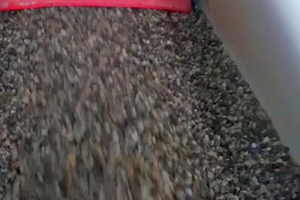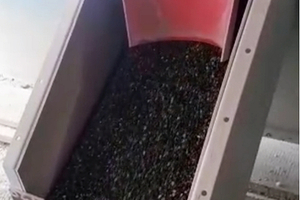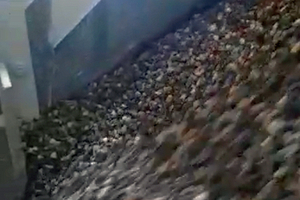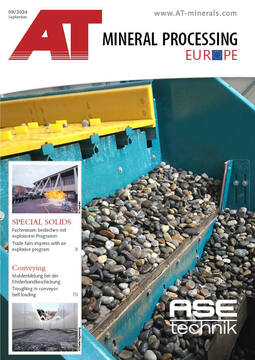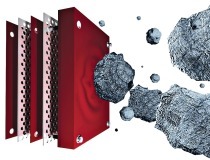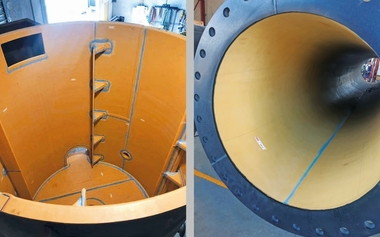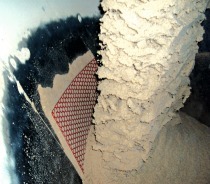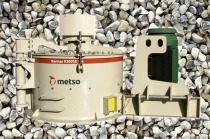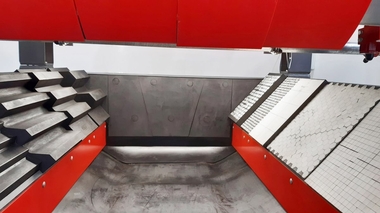Oxyfuel wear protection
Reduce costs with a well thought-out machine layout and oxyfuel wear protection
Sustainability and resource conservation are on everyone’s lips these days. To ensure that these terms are not just empty phrases, certain principles should be observed when planning processing plants in the stone and earth sector as well as processing plants for recycling mineral construction waste. Because the material in the areas mentioned above is particularly abrasive, many plants have to contend with high wear costs, which firstly increases the production costs of the aggregates, secondly reduces plant availability due to the replacement of wear parts and thirdly consumes resources for the production of wear parts. With well thought-out planning in terms of the arrangement of the processing machines and the design of the transfer chutes, wear can be significantly reduced and the material flow optimized.
Well thought-out plant planning
In order to be able to operate processing plants sustainably and trouble-free, it is worth considering the material flow and the arrangement of the processing machines particularly carefully when designing the plant. Ideally, the processing machines should be arranged in a straight line. This means that the material flow does not have to be diverted, which has a positive effect on wear and segregation of the material. The segregation of the material, which occurs when the processing machines are arranged at an angle, can have a very negative effect on the function of individual machines.
In addition, the material to be processed is always dirtier, stickier and contains foreign matter. Under such conditions, every detour of the material flow is a potential source of blockages in the system, which in turn affects the availability of the system. The aim should be to ensure that the machines are fed in a straight line so that long transfer chutes can be dispensed with. Especially in the area of unwashed recycling materials, it is important that the transfer points from machine to machine can be kept as small as possible. The unwashed recycling material is usually very sticky and contains a lot of foreign matter. It is therefore not possible to use autogenous wear protection at these transfer points, as otherwise the risk of blockages is very high. Accordingly, these transfer points must be equipped with wear protection over the entire surface. For long, large transfer points, the wear costs will be correspondingly high.
Autogenous wear protection
When one body moves over another, friction occurs, which causes wear. A simple physical principle that makes automation difficult. Industrial plant operators who work with abrasive materials know the curse of wear particularly well.
In recent years, ASE Technik AG has made a name for itself in the gravel and recycling processing market by paying particular attention to sustainable and cost-effective operation when designing processing plants.
For this reason, wherever possible, ASE Technik AG designs transfer chutes, discharge troughs etc. with autogenous wear protection. Autogenous wear protection is an advanced process that aims to reduce wear and tear on system components. “The consistent implementation of straightforward plant planning and the use of autogenous wear protection by ASE Technik AG convinced us and was one of the main reasons why we commissioned ASE Technik AG with the planning and construction of our excavation washing plant,” explains Jörg Wyss, Managing Director of Baustoffzentrum, Gunzgen/Switzerland.
This technology is based on the principle of self-protection, in which the material is backed up by damming bars and thus accumulates to divert the incoming material. In this way, the material flow is guided to the desired location without touching any parts of the system. As only the individual accumulation ledges come into contact with the wearing material flow in this system, only the easily replaceable accumulation ledges made of wear plate are worn out.
In order to be able to use this system with a wide variety of materials with different flow characteristics, a great deal of experience is required in how the transfer chutes, discharge trays etc. must be constructed/designed. As ASE Technik AG has been using this wear protection method for several decades, it can draw on many years of experience.
Another advantage of oxyfuel wear protection is the significantly lower noise emissions, as the material flow is quietened/dampened. With well thought-out plant planning and the use of oxyfuel wear protection, significant cost optimizations can be achieved in plant operation. “As our rock is very abrasive due to the high quartz content, we looked for a partner who pays particular attention to the low-wear, sustainable operation of the processing plant when planning the system. With the use of autogenous wear protection in the new plant, the wear costs and maintenance intervals have been significantly reduced compared to the previous plants,” says a satisfied Daniel Hackenjos, Technical Director/Owner of Schotterwerk Breisach/Germany.
Fredy von Wyl/Director Construction ASE Technik AG

